Forests are under threat globally from the slowly accelerating impacts of climate change. New Zealand’s forests are no different, with predictions of more frequent, severe droughts, more intense storms, and increasing pest and disease incursions amongst the biggest risks. The author argues that maintaining a healthy ngāhere is the best defence, and that by acting now and getting the management basics right we can mitigate the most severe threats posed by climate change to our native forests.
The reality of climate change
Burning fossil fuels has caused elevated levels of carbon dioxide in our atmosphere – more than can be absorbed by the world’s greatly diminished forests. Carbon dioxide and other greenhouse gases trap heat in the lower atmosphere, driving global warming. Carbon dioxide levels are now at their highest in human history.
The current forested area in New Zealand represents a reduction of over 70% from the pre-human state circa 800 years ago. This large-scale deforestation has been disastrous for our soils, our water, and our biodiversity and has been a source of emissions.
The World Economic Forum recently estimated that natural climate solutions, i.e., investment in conservation, and land use that increases carbon sequestration and reduces emissions, can provide one-third (almost 7 Gt CO2) of the net emissions reductions needed to obtain a 1.5 to 2.0°C pathway by 2030. This would simultaneously address multiple other environmental issues, providing substantial co-benefits for the environment and associated communities.
In New Zealand, weaving our ngāhere (native forest) back into our landscapes will aid climate change mitigation and adaptation, as well as improving water quality, soil stability, and biodiversity conservation. However, climate change is inextricably linked with other compounding environmental crises threatening natural ecosystems, i.e., biodiversity loss, invasive weeds, pests and pathogens, and biosecurity incursions. There is no simple fix as each of these threats is complex to address, let alone the compounding interactions.
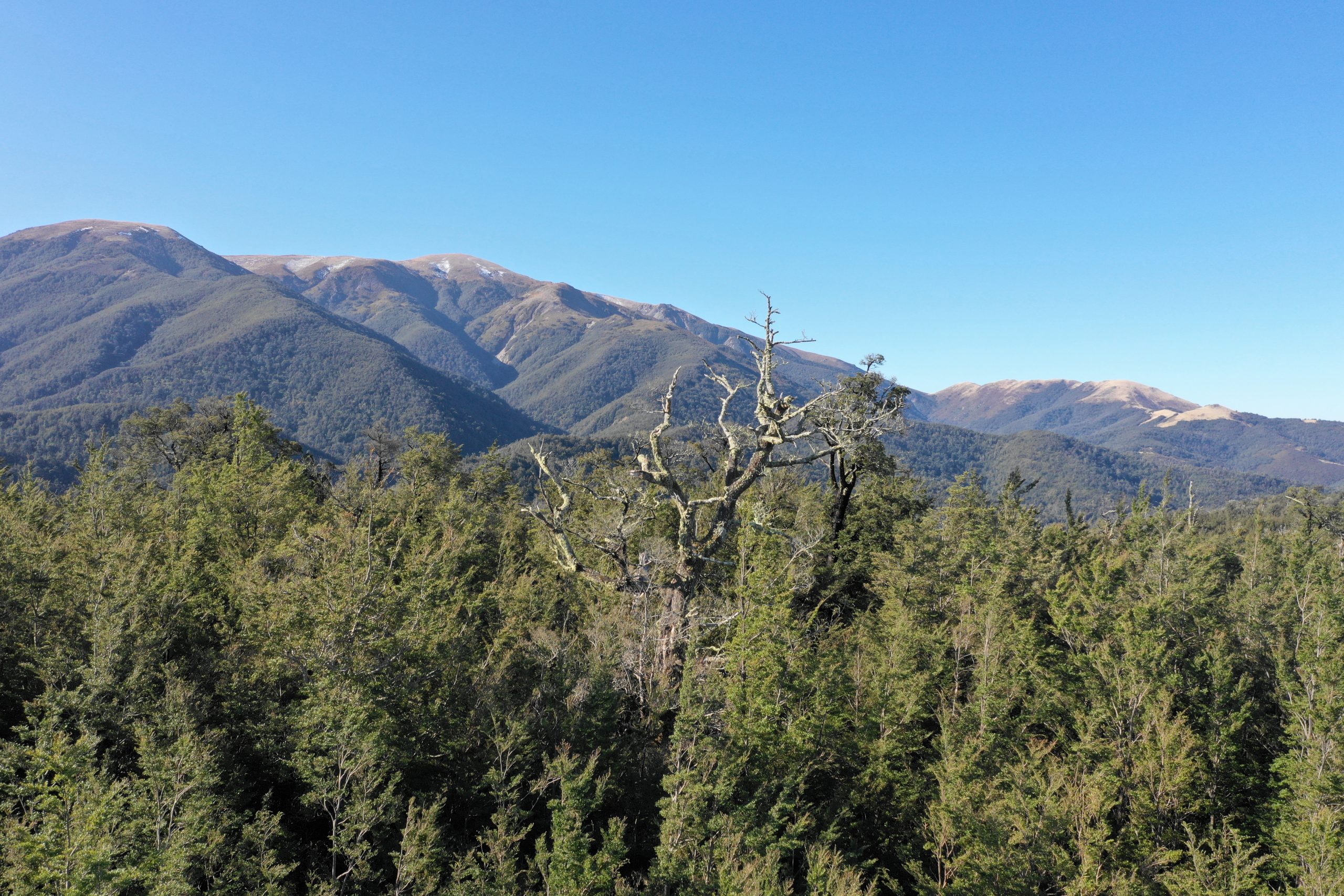
© mikeb_nz
So how can we successfully establish and manage our ngāhere in the face of these threats?First, we need to understand how these intertwined crises are impacting the health of existing ngāhere and the establishment of new native forests. And then we can undertake measures to make our ngāhere more resilient.
Predicted changes in New Zealand’s climate include:
-
-
- Warmer air and water temperatures.The average air temperature has already increased by 0.9°C with a predicted further increase of 0.7 – 1.0°C by 2040.
- Increased intensity of extreme weather, i.e., more intense storm events.
- Increased severity and frequency of drought– particularly in the already dry northern and eastern regions.
- Significant changes in rainfall patterns, including a rise in extreme rainfalls, decreased rainfall in the north and east, and increased rainfall in the south and west.
- Sea level rise– a 14 to 22 cm increase from 1916 to 2016, with predictions of further increases for centuries to come.
- Increase in extreme wind speeds – particularly in the southern half of the North Island, and throughout the South Island.
-
Climate change will have varying effects across New Zealand, so it is important to understand regional impacts. NIWA has published climate projections at the regional level, and many other reports are available.
Climate change and native forests – impacts and solutions
Most of the research in New Zealand on forestry-related impacts of climate change focuses on exotic plantation forestry. However, several findings are relevant to our native forest:
-
-
- pest numbers, pest distribution and incursions of new pests will increase, as will the costs of pest management
- fire risk will increasewith hotter, drier conditions, plus an increase in available fuel due to an increased occurrence of weeds and mortality caused by increased pests and diseases
- extreme weather events will lead tomore erosion on steep and unstable slopes; highlighting the risks associated with some land uses, including clear-fell forestry regimes
- increased wind and storm damage to forests are likely.
-
Protecting existing forest and increasing permanent forest cover are recommended as top priorities for climate change mitigation and adaptation in New Zealand (Climate Change Commission 2021) and globally. This will also capture co-benefits of biodiversity conservation, protection of soils, and better water quality.
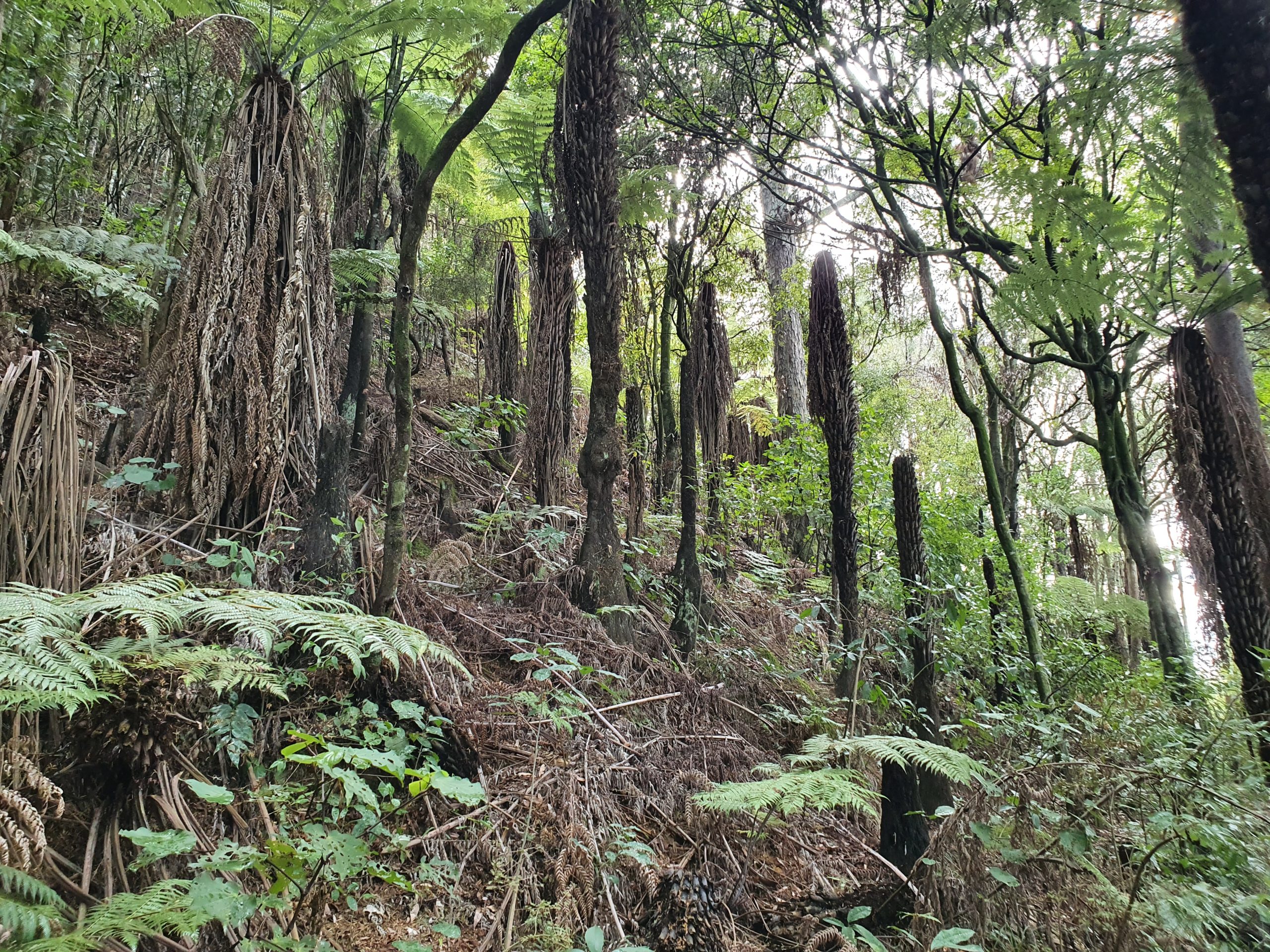
© Prof. Warwick Silvester
Our ngāhere plays an important role in climate change adaptation, particularly:
-
-
- green fire breaks and fire-resistant ngāhere– countering the increased risk of wildfires
- prevention of erosion and landslides – even more important due to more frequent extreme weather events
- riparian areas, green infrastructure and flood protection– riparian vegetation decreases peak flows and moderates flood events. Green infrastructure utilises natural and restored ecosystems, as opposed to manmade infrastructures, to take the pressure off downstream stormwater systems, alleviating flooding, and protecting water quality in urban areas
- coastal buffers– indigenous coastal forest buffers provide sustainable and effective permanent barriers mitigating the effects of sea level rise, and salt and wind damage. Unfortunately, natural coastal vegetation has been cleared from much of our coastline, with almost total removal of dune fores
-
There are significant knowledge gaps in how climate change will impact forests in New Zealand and globally. However, there is already evidence that climate change has contributed to forest dieback in other countries, altering the composition and structure of forests and the distribution of species. Because of the speed of climatic changes, species may not have time to adapt to the new conditions. Profound changes in the composition of some ecosystems could occur and there may be significant latitudinal and altitudinal shifts of vegetation zones. Tree mortality and growth reductions could even transform forest ecosystems from carbon sinks to carbon sources.
In New Zealand, climate change has the potential to destabilise the natural distribution and patterns of abundance of our native species.
Maintaining a healthy ngāhere is the best defence!
Stressors such as invasive weed species, pests, disease, loss of ecologically key species, and degradation and fragmentation of ecosystems tend to amplify the sensitivity of ecosystems to climate change.
It is more important than ever to get the basics right, as described in Dr David Bergin’s Ten Golden Rules of Native Species. This includes thorough planning and working with Nature to encourage natural regeneration, or if planting new areas, ensuring you have good quality, eco sourced planting stock.
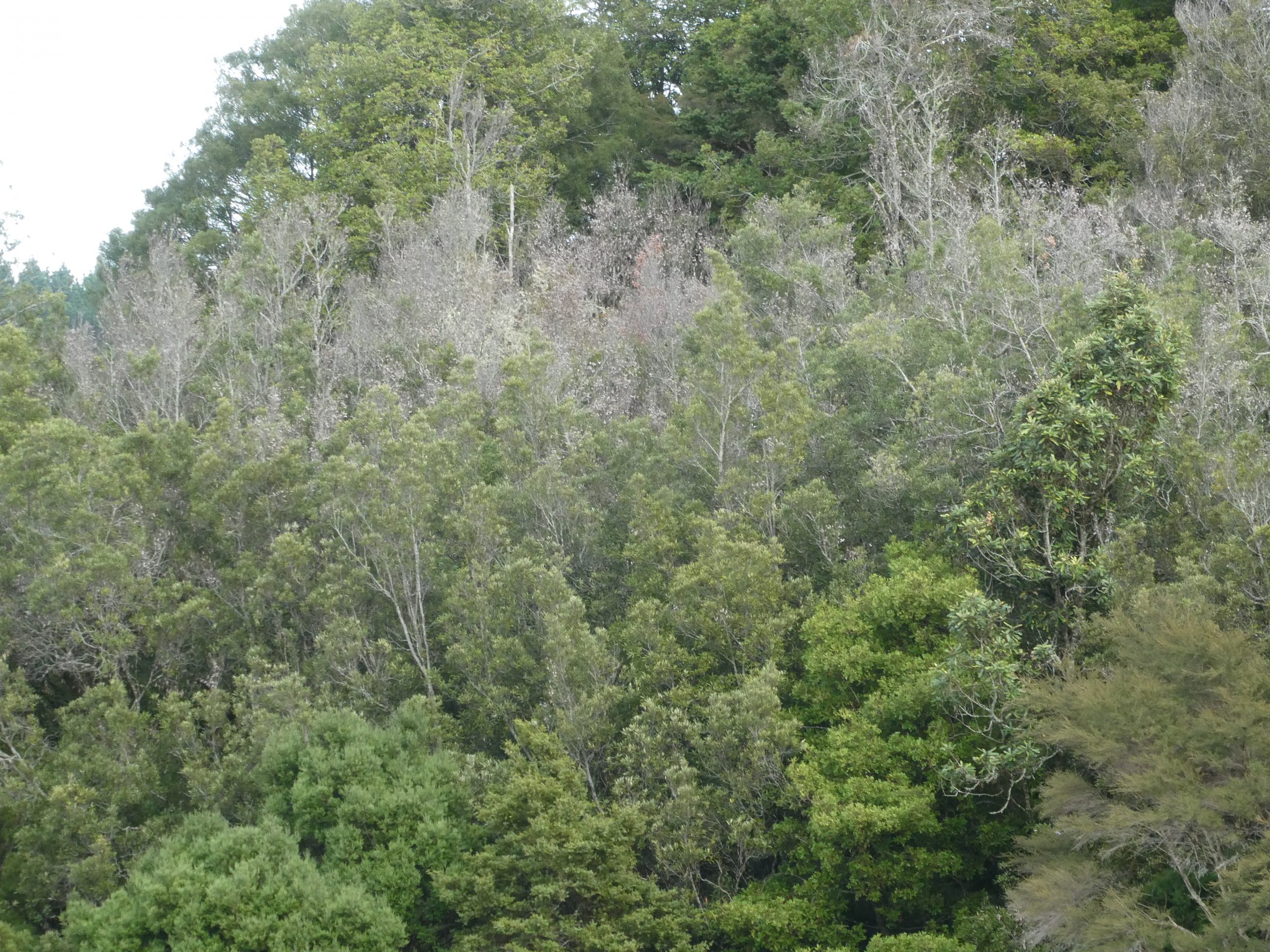
© Prof. Warwick Silvester
Mitigating the impact of drought and heat
Recent droughts, including the 2019/2020 summer drought, have resulted in tree mortality in many affected areas. We can expect to see more, and more intense droughts in the future, particularly in northern and eastern regions of the North Island and eastern regions of the South Island. Time spent in drought could double by the middle of the century. Healthy, established forests are generally more resilient to drought, whereas recent plantings are more vulnerable as they are more exposed to the weather and developing root systems do not have access to deep-soil-water stores. Again, practitioners establishing new native forests need to be conscious of the threat of drought, and follow best practice guidelines.
Green fire breaks and fire-resistant ngāhere – defence against wildfires
Wildfires have always occurred, but predictions of increased fire risk associated with climate change mean that extensive wildfires such as those experienced in Port Hills (2017) and Pigeon Valley ( 2019) are likely to become more common. However, fire danger in some areas will remain unchanged or even decrease due to increased precipitation.
Healthy native forest is quite resistant to all but the most intense fires because the understory is thick with shrubs, ferns, seedlings, saplings, lianes, epiphytes, mosses and liverworts. We all know what it is like to walk into intact native forest on a hot, dry day – a microclimate of cooler, moist air is created by shade and evapotranspiration.
But in many areas, the bush is often an eaten-out remnant of what was once a self-sustaining forest, and has a lot of standing deadwood and dried fern fronds. With pest control and fencing, the understory can begin to re-establish and fire resistance will improve.
Green fire-breaks can be a tool to help slow or even stop the spread of wildfires. These strips of low-flammable plant species can be grown at strategic locations in the landscape – such as in wildland-urban interfaces, around homes and buildings in rural settings, in shelterbelts, or interspersed throughout plantations of more flammable species. Not all plant species burn the same but many native species have low flammability and are suitable for green firebreaks. (Note that some native species are highly flammable, particularly mānuka and kānuka).
Extreme weather, disturbance and our ngāhere
Extreme weather can cause disturbances such as landslides, windthrow, and flood events. Disturbances are natural phenomena that have impacted our ngāhere for millennia. Before human intervention, native pioneer species would quickly establish in any canopy gaps or on bare soil. However, introduced pests and invasive weeds interfere with the natural regeneration processes. And climate change will create more disturbances due to an increase in extreme weather.
This is likely to have an impact on the population dynamics and composition of our native forests. And carbon sequestration will be reduced if forests fail to regenerate quickly, or fail to regenerate at all. Assistance with forest regeneration after disturbance may be necessary, particularly pest and weed management, and possibly supplementary planting.
Complex multi-aged, permanent forest, or uneven-aged forest managed through single-tree selection, is likely to be more stable in high winds compared with even-aged plantations.
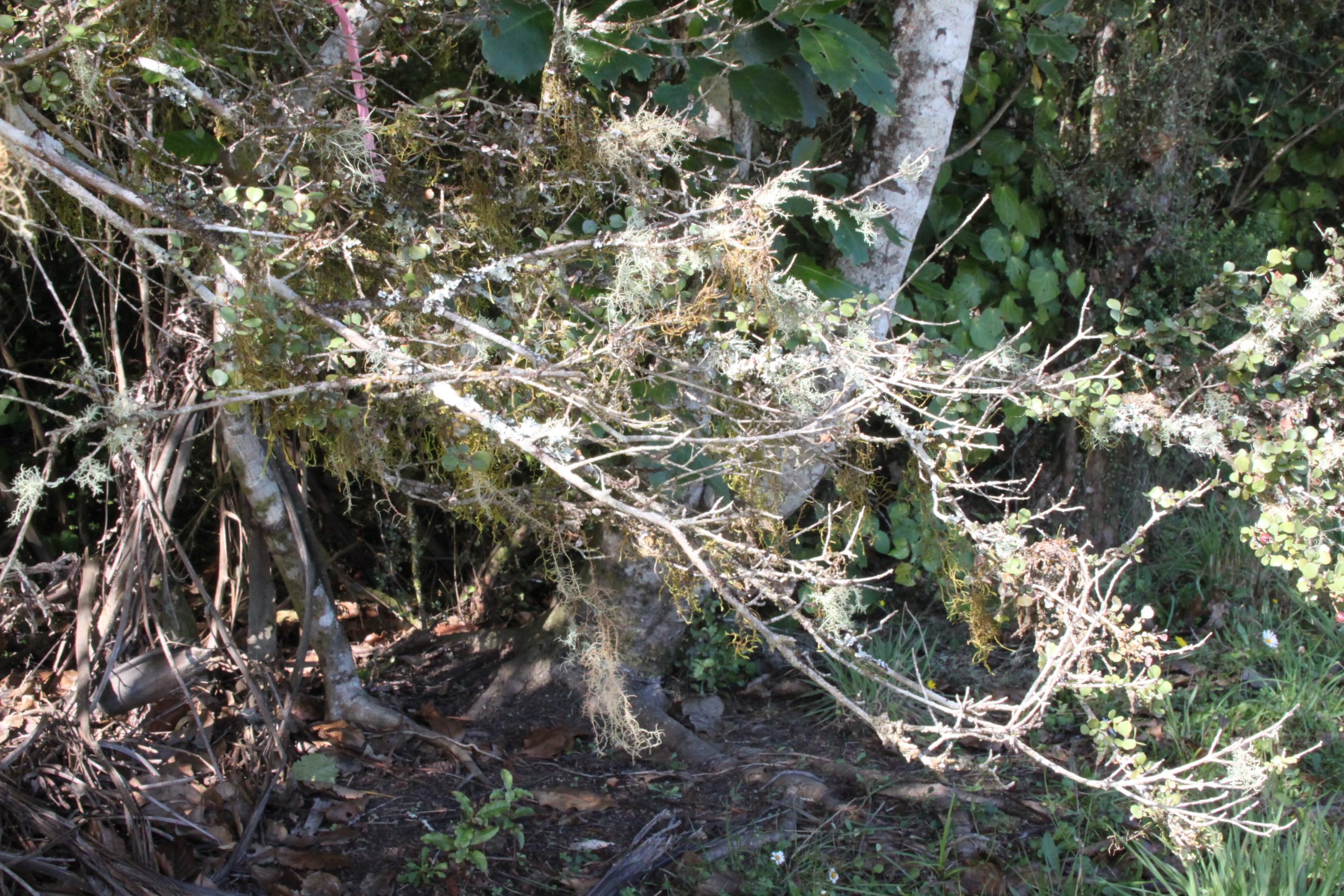
© Dr. Jacqui Aimers
Climate change and our biodiversity crisis
Most of our indigenous flora and fauna are endemic (i.e. only found in New Zealand) and many are highly unique having evolved in geographic isolation for millions of years. This unique biodiversity was already under considerable threat before climate change was added to the equation. Our species extinction rates are among the highest in the world. The main threats are habitat loss, fragmentation and degradation of ecosystems, invasive weeds, introduced predators and pests, and new incursions of pathogens.
Intact, structurally complex, species-rich forests are more resilient in the face of climate change and are better at delivering a myriad of ecosystem services including carbon sequestration. Conversely, loss of biodiversity can reduce the resilience of forest ecosystems, making them even more sensitive to the effects of climate change.
To date, climate change has had relatively modest effects on ecosystems and biodiversity in most parts of the world, compared with other anthropogenic actions, but this is likely to change over the coming decades. In New Zealand, threats such as invasive pests and weeds, habitat loss, and disease are thought to pose more serious risks in the short to medium term than climate change. Damage by browsing pests, such as possum, deer, and goats, can cause regeneration failure of palatable tree species and diminish the value of the forest for habitat, further diminishing the biodiversity of indigenous wildlife and plant species.
Ongoing management to control invasive weeds and pests is required. Some sites will also benefit from enrichment planting of tree species where there are no nearby seed sources. We need to weave indigenous biodiversity back into our productive rural lowlands and urban areas to counter the under-representation of lowland ecosystems in the conservation estate. Restoration of riparian zones is particularly beneficial as this restores terrestrial and aquatic biodiversity, helps link fragmented ecosystems and create ecological corridors, improves water quality, and contributes to climate change adaptation and mitigation..
Strategic measures for sustaining indigenous biodiversity in the face of climate change are summarised in a Manaaki Whenua − Landcare Research report:
- continue to reduce the pressure from pests, weeds and pathogens
- protect, buffer and restore our remaining ecosystems, including in modified landscapes
- ensure connectivity between ecosystems and habitats to enable migrations and allow ecosystem adjustment so species can find viable niches as the climate changes.
Pests, weeds, diseases, and climate change
Due to increased global trade, a warmer climate, and greater disturbance, we are facing more biosecurity threats, i.e., increased risk of incursions of pests, weeds and pathogens. A warmer climate means that biosecurity incursions from subtropical and tropical regions are more likely to become established in New Zealand. And currently established pests, weeds, and pathogens are likely to change their habitat ranges and population size and become more of a threat to our native biodiversity due to climate change.
New Zealand likely has one of the best biosecurity systems in the world, but there is little investment in protecting native forests from pest and disease incursions. The recent incursions of kauri dieback and myrtle rust have demonstrated how vulnerable our native species are – these pathogens are having widespread and devastating impacts on iconic forest species and the ecosystems they support.
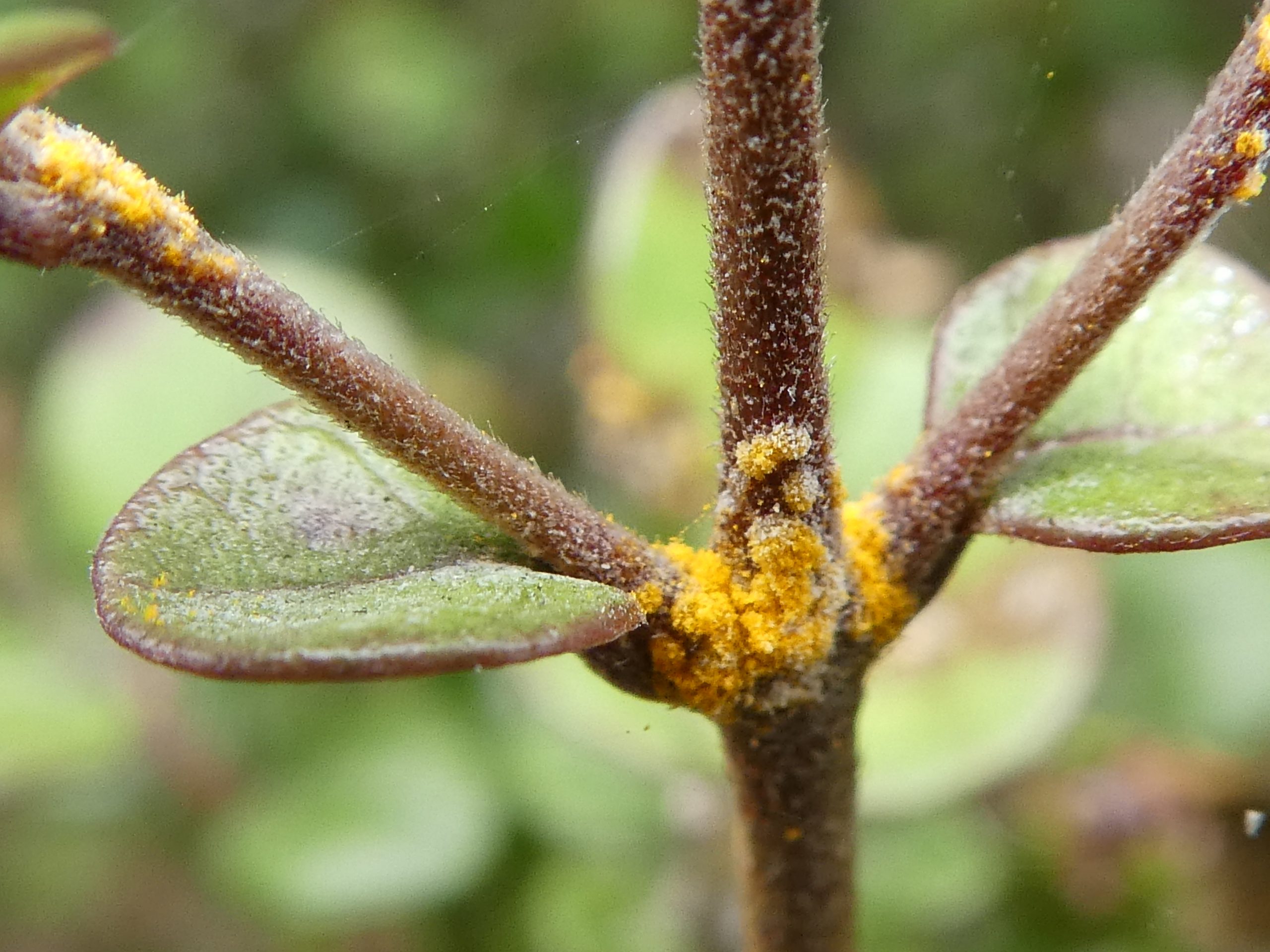
© Dr. Jacqui Aimers
Protecting our ngāhere against pest and disease
It is imperative that any new potential unwanted pests and pathogens are thwarted at our borders. This includes pathogens that present even more serious threat to our myrtle species than the myrtle rust strain already in New Zealand.
Biosecurity measures must be upheld from nursery propagation through to planting and forest management. Biosecurity New Zealand has advice on how to find, report, and prevent pests and diseases Advice is also available for current incursions. The Kauri Dieback Programme has guidelines including a kauri propagation and planting guide. The Myrtle Rust in New Zealand website also provides good information and resources.
We need to be more committed than ever to pest and weed control. Control of pests not only helps restore the health of our ngāhere, protecting palatable species and forest regeneration, it also allows our vulnerable indigenous fauna a chance to survive and thrive. Predators have had a devastating impact on our indigenous wildlife. And high numbers of introduced browsers open up the understory, drying out the forest making it more vulnerable to pests and diseases, and providing opportunity for invasive weeds. Invasive weeds impact through competition and changes in ecological associations, and prevent regeneration of native forest.
Germplasm conservation must be considered for species under dire threat. This includes seed banking and conservation plantings of the species outside of their natural range, in locations where there is less threat. This is particularly important when a lethal disease or pest incursion is difficult to control and is likely to overlap host species’ natural range, such as with Phytophthora agathidicida (PA) and kauri, and with myrtle rust and several of our vulnerable myrtle species.
There are biological, aesthetic and cultural concerns about planting species away from their natural range; however, in the face of potential extinction, drastic action is warranted.
Seed banking is helping to ensure the long-term future of our myrtle species. Seed has been collected from our native myrtles throughout New Zealand as an insurance policy – preserving the genetics of our myrtle species in the event of myrtle rust spreading throughout New Zealand and potentially causing extinctions.
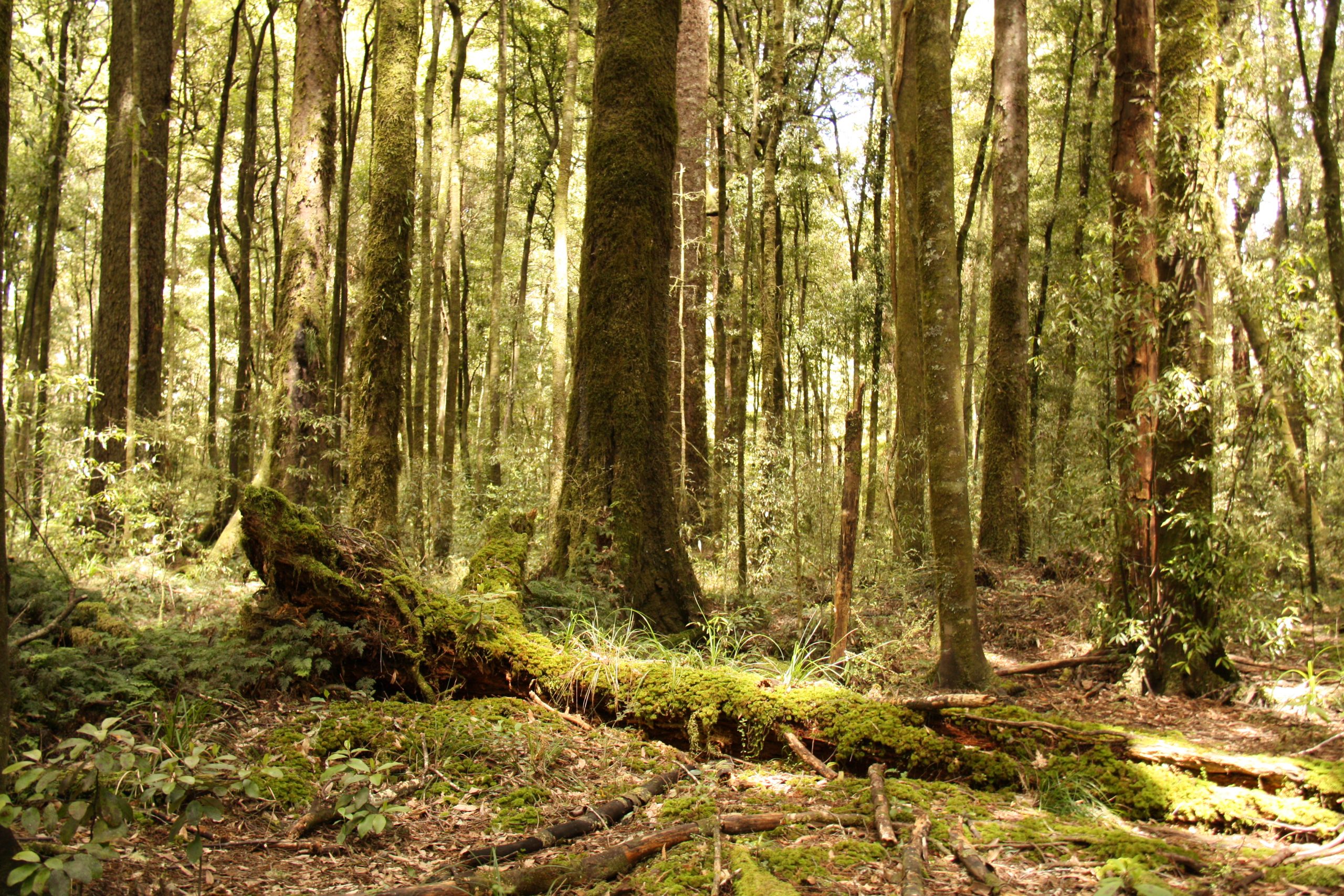
Conclusions
Bold policymaking, advances in science, and the goodwill of stakeholders can help weave more ngāhere back into our landscapes, helping New Zealand to become carbon neutral by 2050, while simultaneously resolving multiple other environmental crises. Measures of success will include restored ecosystems, better recognition of the importance of natural resources, improved biodiversity values, reduced erosion, cleaner water, greater resilience to climate change, and contribution to world efforts for a more stable climate.
There are significant knowledge gaps in how climate change will impact native forests and what management practices will assist in increasing resilience. This is an urgent area of research, considering the recent recommendations of the Climate Change Commission to significantly increase native forest cover. Research needs to be targeted at understanding and managing the increased risks associated with climate change.
Research and action are urgently needed on:
- the cumulative and cascading impacts of climate change and the other intertwined stressors, including biosecurity incursions
- the impact on ecosystem function and ecosystem services, such as carbon sequestration; and risk management and mitigation measures to make our ngāhere more resilient.
- germplasm conservation measures for kauri and vulnerable myrtle species.
- integrating our ngāhere into risk mitigation and adaptation strategies, e.g., green firebreaks, coastal buffers, riparian buffers, and green infrastructure.
- communicating research findings so that appropriate policy is generated, and stakeholders’ needs are met, especially those doing the mahi of forest establishment and management, and those funding it.
Maintaining a healthy ngāhere is the best defence! It is more important than ever that we get the basics right and follow best practice in establishing and managing our ngāhere. The ultimate goal is ensuring that we have structurally complex and species-rich forest ecosystems that are resilient in an era of climate change.

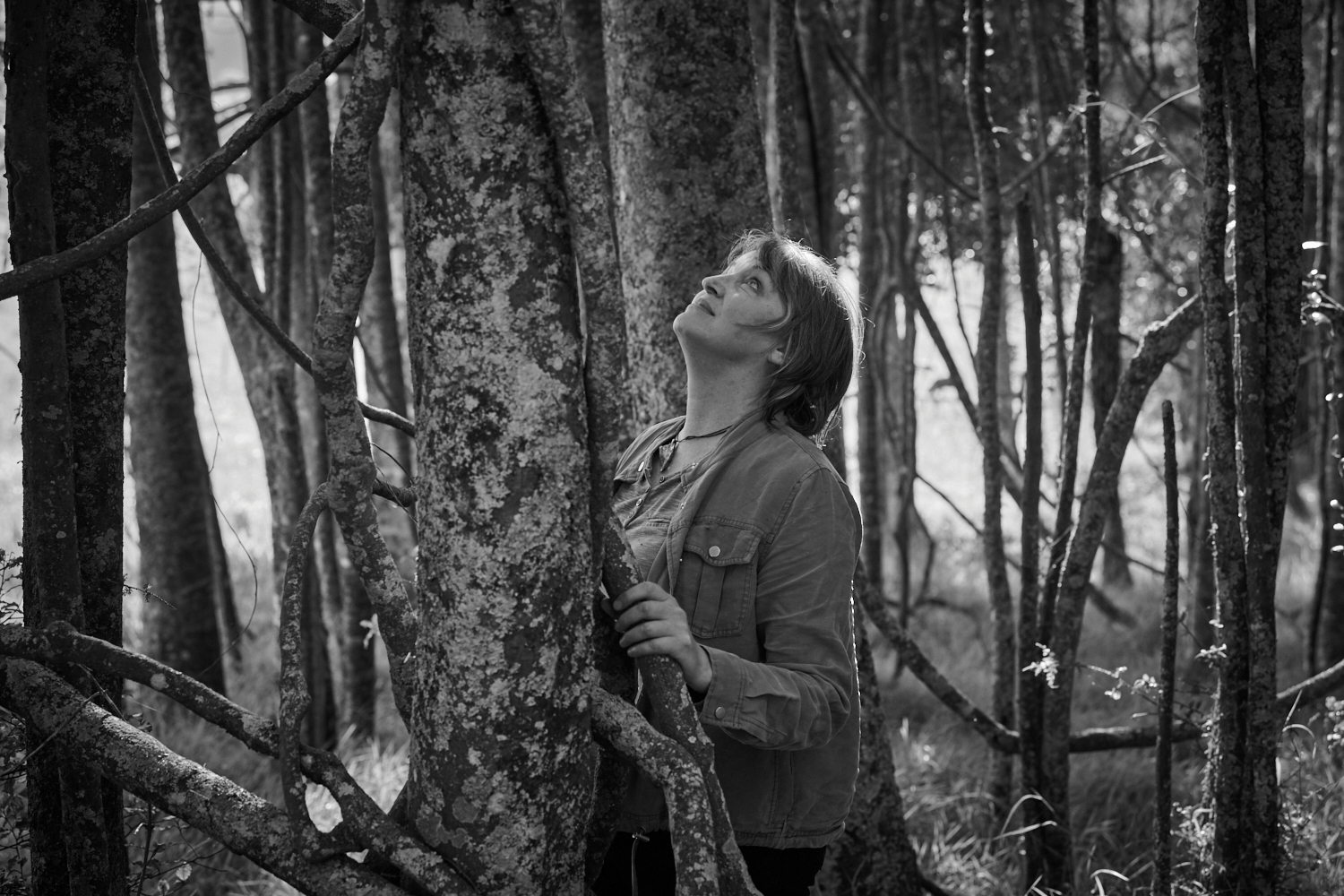


Leave a comment